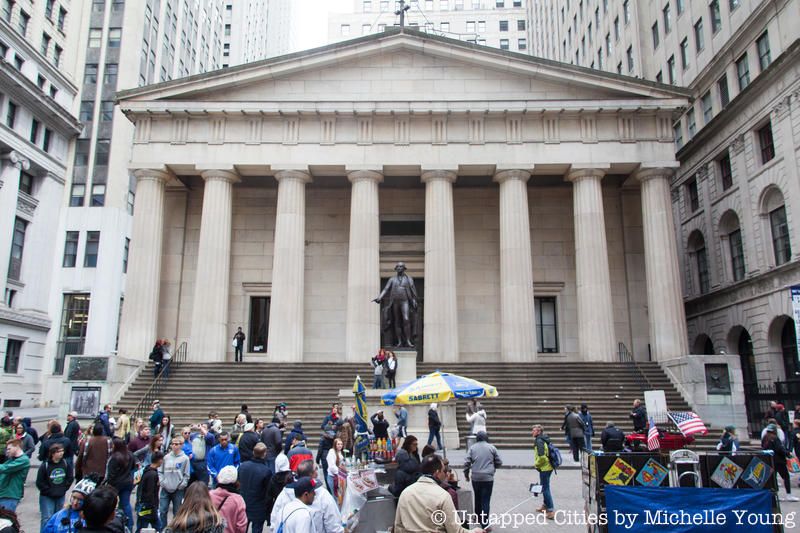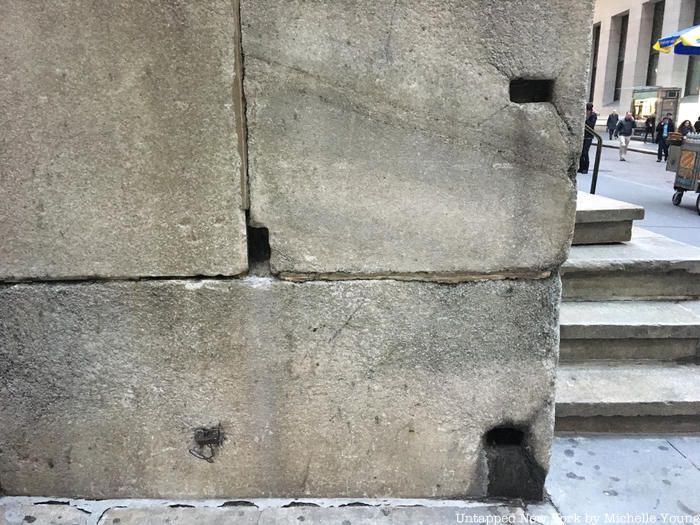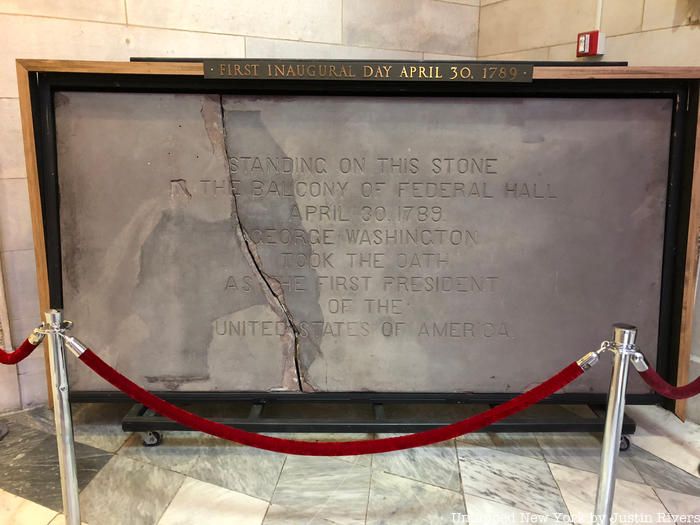Last-Minute NYC Holiday Gift Guide 🎁
We’ve created a holiday gift guide with presents for the intrepid New Yorker that should arrive just in time—


Federal Hall is designed in a classical style that brings to mind images of the great Parthenon of ancient Greece. It is a style that exudes strength and stability, perfectly fitting for a federal building at a site where many fundamental events in America’s early history took place. If you look closely, though, you can find cracks on the stalwart structure’s interior and exterior masonry. Years of wear and tear from the bustling city streets, and the 9/11 attacks, which left the entire nation vulnerable, left their mark on this historic structure.

Opened as a customs house in 1842, the building we see today is the second structure to occupy the site at 26 Wall Street, just steps away from the New York Stock Exchange. The first building was constructed between 1699 and 1703 and served as New York’s City Hall. In 1788, after the constitution was ratified, architect Pierre L’Enfant was commissioned to remodel City Hall to make it appropriate for the seat of the federal government, as New York was the capital of the new nation. In that original building that the first Congress convened to create the Bill of Rights, many landmark court cases were decided, including the trial of John Peter Zenger, and George Washington took the oath of office when he was inaugurated as the first President of the United States. The original Federal Hall structure was demolished in 1812 when New York’s new (and current) City Hall was complete. The existing structure is officially known as Federal Hall National Memorial.
[post_featured_tour]
As New York City grew around it over the next 150 plus years, Federal Hall began to show signs of wear. Standing beneath the great rotunda, you can feel subway cars below rumbling by. Unceasing vibration from underground and street traffic caused fissures to appear in the masonry of the rigidly built structure. Those small cracks were exacerbated by the 9/11 terrorist attacks at the World Trade Center, less than a mile away, and the seismic shocks that reverberated throughout Lower Manhattan. You could most clearly see large Federal Hall cracks in the cornerstones outside and on the intricate marble ornamentation around door frames inside.

In 2004, the National Parks Service brought in Langan Engineering and Environmental Services and the architecture and engineering firm of Einhorn Yaffee Prescott to assess and fix all of the damage as part of a two-year, $16 million rehabilitation project. Using ground-penetrating radar, the engineers found that Federal Hall cracks were a small part of larger structural problems. Below one column, instead of finding soil, there was an empty void of air. The building was built atop shifting soil, so to stabilize it, 60-foot steel pilings were driven into the bedrock. Mini-caissons made of a concrete-like grout were also added to give the building a sturdy foundation. Cracks in the interior marble and stone foundations were stabilized and patched.

Federal Hall underwent further restoration in 2015, though the work was more cosmetic. Marble and bronze elements on the building’s exterior were restored, the deteriorating front steps repaired, and architectural lighting was added to highlight the building at night. The project, which was partially sponsored by the National Trust for Historic Preservation, also included a campaign to bring awareness to the historic site with a series of public events. Today, Federal Hall National Memorial is one of eight National Park sites in the New York City area, including the Theodore Roosevelt Birthplace and the African Burial Ground, among others. Inside the rotunda, there are frequent educational and art exhibitions, and you can tour the building with a National Park Ranger. You can also see the bible used for Washington’s inauguration and a piece of the balcony he stood on. That piece of balcony also has a large crack in it from when it was being moved. In this case, the crack is a good thing. A cement coating was added in order to make an inscription, but the crack allows you to see past the cement to the original stone.
Discover more secrets of Federal Hall on our upcoming Hidden Gems of the Financial District walking tour!
Next, check out Daily What?! A Temporary Replica of Federal Hall Once Existed at NYC’s Bryant Park and The Top 10 Secrets of NYC’s Federal Hall
Subscribe to our newsletter